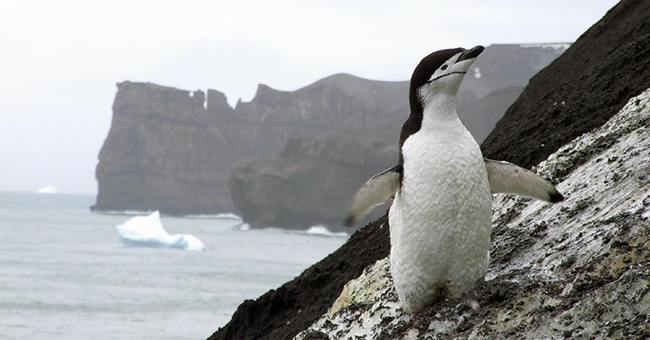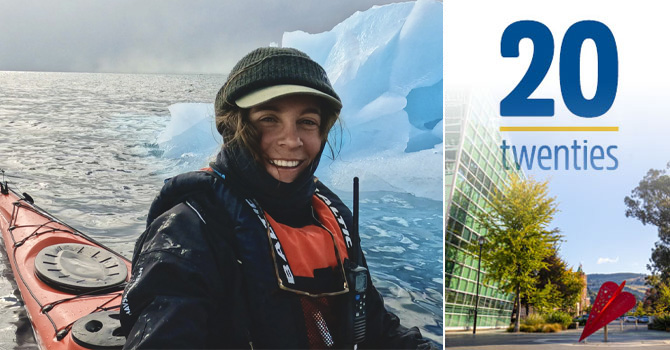News

06 Mar 2024
Antarctica’s coasts are becoming less icy
An increase in pockets of open water in Antarctica’s sea ice (polynyas) may mean...

19 Oct 2023
Biodegradable plastics still damaging to fish – Otago study
Biodegradable plastics may not be the solution to plastic pollution many hoped f...

10 Jul 2023
From zombi fungi to kororā with Henry the Paleoguy
Otago undergrad Henry Scott things to say about everything from Zombi fungi to D...

16 Jun 2023
Anna Parsons: The next chapter
When Anna Parsons returns to America next month, she will take her climbing rope...

13 Jun 2023
Scholarships support vital conservation-based research
Aotearoa New Zealand’s wildlife and natural environment will benefit from three...

17 May 2023
Wednesday 17 May 2023, Otago researchers reveal impact of ancient earthquake
By combining the scientific powerhouses of genetics and geology, University of O...

06 Apr 2023
Q&A with Millie Mannering – 20Twenties 2022 recipient
From the Caribbean to the High Arctic, since leaving Otago Millie has travelled...

23 Mar 2023
Phytoplankton blooms offer insight into impacts of climate change
The first study into the biological response of the upper ocean in the wake of S...
Events
06 August 2024
5:30pm to 7:00pm
Inaugural Professorial Lecture - Professor Ceridwen Fraser
Archway 1 Lecture Theatre, Dunedin
18 August 2024
Various times
Marine Encounters at the NZ Marine Studies Centre August 2024
New Zealand Marine Studies Centre, 185 Hatchery Road, Portobello 9014, Dunedin
29 September 2024
Various times
Marine Encounters at the NZ Marine Studies Centre September 2024
New Zealand Marine Studies Centre, 185 Hatchery Road, Portobello 9014, Dunedin
13 October 2024
Various times
Marine Encounters at the NZ Marine Studies Centre October 2024
New Zealand Marine Studies Centre, 185 Hatchery Road, Portobello 9014, Dunedin
17 November 2024
Various times
Marine Encounters at the NZ Marine Studies Centre November 2024
New Zealand Marine Studies Centre, 185 Hatchery Road, Portobello 9014, Dunedin
08 December 2024
Various times
Marine Encounters at the NZ Marine Studies Centre December 2024
New Zealand Marine Studies Centre, 185 Hatchery Road, Portobello 9014, Dunedin
Archived stories
Colossal Squid dissection (2014)
Our student Tyler Northern helped to dissect a Colossal squid with NIWA at Te Papa (the second specimen ever found intact!):
https://www.youtube.com/watch?v=8Yz_57uadUQ
Te Papa also have a blog with more details on the dissection:
http://blog.tepapa.govt.nz/2014/09/05/colossal-squid-live/
Invasive Bryozoan and Ascidian Recruitment and Growth Experiment – iBARGE (2017)
Otago researchers join international study examining the fouling communities of ports and harbours.
Department of Marine Science researchers have joined iBARGE, the Invasive Bryozoan and Ascidian Recruitment and Growth Experiment.
iBARGE aims to examine the richness and growth rates of fouling communities, groups of marine organisms that grow on the undersides of boats, docks, and aquaculture equipment. In many locations, fouling communities are dominated by invasive species which can overgrow native species including commercially important organisms like oysters and mussels.
The iBARGE program compares the growth rates of invasive species between locations on three different continents (the east and west coasts of North America, the UK, and NZ), using photographs taken on a weekly basis. Settlement panels – PVC squares – were deployed in the northern hemisphere's spring and summer and in Otago Harbour for the austral spring and summer. Analysis of the data collected is allowing scientists to understand how growth rates vary with water temperature and location.
Visit the iBARGE website:
http://ibargeprogram.wordpress.com/